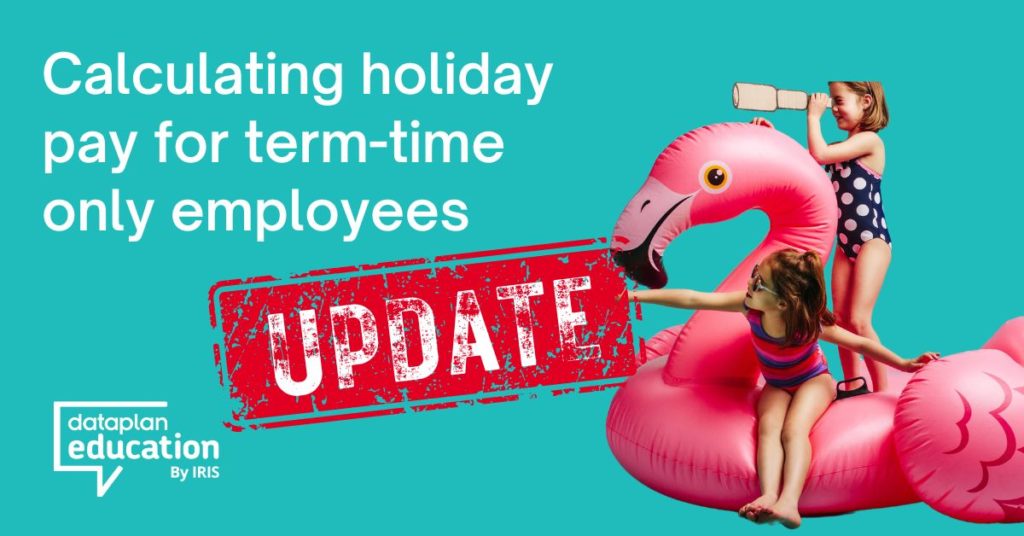
We issued detailed guidance on the outcome of the Harpur Trust v Brazel case regarding Holiday Pay calculations in our blog in August 2022. Needless to say, there has been much discussion and many queries on not only the calculation of holiday pay but the wider implications of the case.
This case spent years working its way through the court system. It finally made it to Supreme Court for a final decision this summer.
The case was brought forward because Mrs Brazel, a visiting music teacher at a school run by the Harpur Trust, believed that she was disadvantaged when holiday pay was considered because she only worked term time, despite having a permanent contract.
The Supreme Court agreed with the Upper Tier Tribunal and Mrs Brazel. It said part-time workers on a permanent contract should have the same basis of calculation of holiday pay as full-time employees.
A carefully prepared update
We have purposely held off providing this update as we have been awaiting further guidance and opinion from two leading employment law barristers.
Let’s recap on what hasn’t changed. For a full-time employee, the statutory holiday entitlement remains 5.6 weeks. This equates to 12.07% for the calculation of holiday pay. For salaried employees, holidays are taken, there is no adjustment to pay, and they are paid their salary whilst taking the 5.6 weeks’ holiday.
Employees with variable pay, for example, work different hours each week or work regular overtime. Holiday pay is based on the average weekly pay calculated over the previous 52 weeks. A word of caution here: there is no statutory definition of ‘regular’. If an employee works overtime once or twice a year, this is not regular, and therefore overtime would not come into the holiday pay consideration.
So, which employees face the possibility of being affected by the Brazel case? Part-time employees and workers or those who work part of the year under a permanent or continuous contract of employment. This includes term-time employees (as was the case with Brazel). Various examples will help with the understandings of the ruling.
Term-time employees
Example 1
Term-time employee with fixed hours
The employee is entitled to 5.6 weeks paid holiday, as they work term time only. – 12.07% holiday pay meets the requirement of the Brazel case. If the employee works two days per week in term time, the 5.6-week statutory entitlement is calculated on a pro-rata basis.
Example 2
Term-time employee with fixed hours paid evenly for 12 months
The employee gets paid during school holidays. The worker is effectively on holiday, and time off exceeds the statutory minimum holiday entitlement of 5.6 weeks. No additional payments are required.
This next point is not holiday pay related; however, employers should ensure that each monthly payment made is National Minimum Wage (NMW) compliant. If a term-time employee is paid Minimum Wage but paid every month, Minimum Wage is NOT paid under the NMW legislation.
Example 3
School cricket coach on a permanent contract to work for two months (eight weeks) at £1,000 per week
As the employee is permanent, the holiday entitlement is still 5.6 weeks, although only eight weeks are worked. The average pay calculation is required – which averages out to £1,000 per week. Holiday pay of £5,600 must be paid.
The Supreme Court has acknowledged that the judgement puts part-time workers in a more favourable position than full-time employees. However, in their view, this did not justify amending the statutory provision.
Example 4
Term time with no fixed hours
Mrs Brazel is the perfect example here. She did not have fixed hours, although she was contracted to work term time. As her pay varied, the Supreme Court held that her holiday pay should be paid based on the average weekly wage. Harpur Trust paid her based on 12.07% of pay. This resulted in an underpayment of £700. The Supreme Court held that as Mrs Brazel was a ‘worker’, Section 224 of the Employment Right Act applied to the calculation of her holiday pay, which is the average method over the previous 52 weeks. The other important factor was that Mrs Brazel did not work every week (she didn’t work on school holidays).
Part-time employees
Does the Brazel case mean that all part-time employees are entitled to 5.6 weeks? No! A part-time employee will receive a proportion of the 5.6 weeks based on the number of days per week that they work.
For example, an employee working two days per week will receive 0.4 of the full-time equivalent, which is 11.2 days’ holiday.
What barristers (and employers) say
What was the advice given by the barristers if an employer continues to pay 12.07 %? They could not give direct advice on this, and nor can we. However, they considered that it was down to employer risk management. This is an extremely complicated . Many clients I have spoken to will continue to pay 12.07% because the outcome of the Brazel case was based on very unusual circumstances. Although Brazel was underpaid by £700, most employees will only be underpaid by a few pounds if the average method is used.
Employers are taking the view that a re-calculation can be undertaken if an employee queries about their holiday pay. If there has been an underpayment, this can be addressed directly with the employee at the time rather than undertaking detailed calculations for all employees when they may not have been necessary.
I have also had discussions with clients who are paying upwards of 14.5% for holiday pay for variably paid employees. The consideration there being that the higher rate will cover any potential variances if the average method were to be considered. I think this is a reasonable commercial view to take, especially for employees with numerous variably paid employees with complicated calculations.
